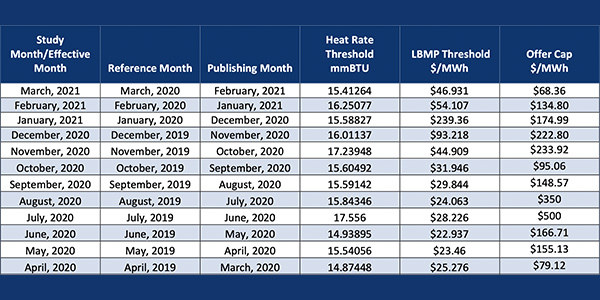FERC on Thursday modified its Oct. 7 decision disqualifying New York’s Commercial System Distribution Load Relief Programs (CSRP) from an exemption under NYISO’s buyer-side mitigation (BSM) regime, agreeing with the complainants that the programs help companies avoid or defer costly distribution infrastructure upgrades and are not primarily designed to offset transmission investment (EL16-92-004, et al.).
The commission unanimously approved the order, with Commissioners Allison Clements and Mark Christie filing separate concurrences.
Then-Commissioner Richard Glick, now chairman, had dissented from the commission’s decision not to exempt commercial demand response programs from NYISO’s BSM rules, saying the rules “have evolved into a scheme for propping up prices, freezing in place the current resource mix and blocking states’ exercise of their authority over resource decision making.” (See FERC: NY DR Program Not Exempt from Offer Floor Rule.)
The New York State Public Service Commission, New York State Energy Research and Development Authority, New York City, Natural Resources Defense Council, Advanced Energy Management Alliance, Energy Spectrum and The E Cubed Co. jointly filed a request for rehearing. Consolidated Edison also filed a request separately.
Program Design
The dispute grew from a paper hearing begun by the commission a year ago, when it narrowed the resources exempt from NYISO’s BSM rules in southeastern New York, partly reversing the commission’s 2017 decision granting a blanket exemption from the rules for special-case resources (SCRs). (See FERC Narrows NYISO Mitigation Exemptions.)
The whole topic has been fraught with contention, and NYISO in January filed a petition with the D.C. Circuit Court of Appeals asking it to review the commission’s rejection of the ISO’s proposal to exempt public policy resources from its BSM rules (ER20-1718-001). (See NYISO Appeals FERC Rejection of BSM Proposal.)
Upon reconsideration of the testimony and clarification provided by the rehearing requests, the commission concluded that payments received under the CSRPs qualify for exemption from the calculation of SCR offer floors, as do the payments received under the Distribution Load Relief Programs (DLRPs), which it had ruled exemptible in October.
Companies alleged that the commission strayed from its own February 2020 order in applying an “exclusive benefit” standard in evaluating a retail-level DR programs’ eligibility for exclusion from the SCR offer floor calculation.
Similarly, the state and environmental parties argued that the commission, by finding that any program that provides reliability benefits to the transmission system does not solely address distribution reliability needs, contradicted its October order that said DR programs that are designed to address and predominantly address distribution-level reliability needs are not properly considered as providing capacity.
“We also find persuasive companies’ explanation that, although the companies’ CSRPs are triggered based on forecasted system peaks, the relief occurs at the distribution level,” the commission said. “Accordingly, we agree that the CSRPs under consideration here are not designed to address systemwide needs and that any incidental systemwide reliability benefit that the CSRPs might provide is not the result of the programs’ design. That finding is consistent with the commission’s treatment of DLRPs, which may have a similar, incidental systemwide benefit.”
‘Trench Warfare’
Clements said that former Chair Norman Bay was “prescient” four years ago when he cautioned that misapplication of market power mitigation in the form of minimum offer price rules (MOPRs) was “unsound in principle and unworkable in practice,” and that it would place the commission in direct conflict with the states.
“Where there is evidence that market power exists and could lead to unjust and unreasonable wholesale rates, we must address it. But NYISO’s buyer-side mitigation rules have, with the complicity of the commission, been misappropriated toward ends unrelated to mitigating market power,” Clements said. “NYISO’s market rules must instead acknowledge the state’s exercise of legitimate authority and provide for an efficient wholesale market framework that respects the state’s resource mix choices.”
Christie decried “this continuing trench warfare over ‘MOPR-type’ issues in individual cases in which only a tiny fraction of the interested universe can participate.”
While the issues involved in Thursday’s order have been described as an example of the alleged misuse by the commission of BSM rules, he said others may describe them as an effort to prevent retail subsidies paid to certain DR providers from unfairly impacting prices in NYISO’s Installed Capacity market, which is under FERC jurisdiction, he said.
That same day, Chair Glick announced that the commission would convene technical conferences on each of the capacity markets under its jurisdiction, including NYISO’s. (See related story, Glick Hits ‘Refresh’ at 1st FERC Open Meeting.)
“If consumers in other states were disadvantaged, I may well view this matter differently, but on this record — and with the desire to see this entire issue teed up for review and consideration — I concur,” Christie said.




